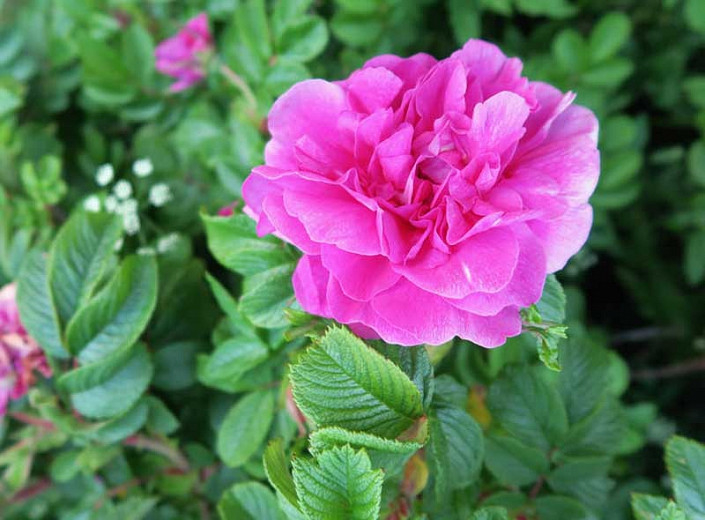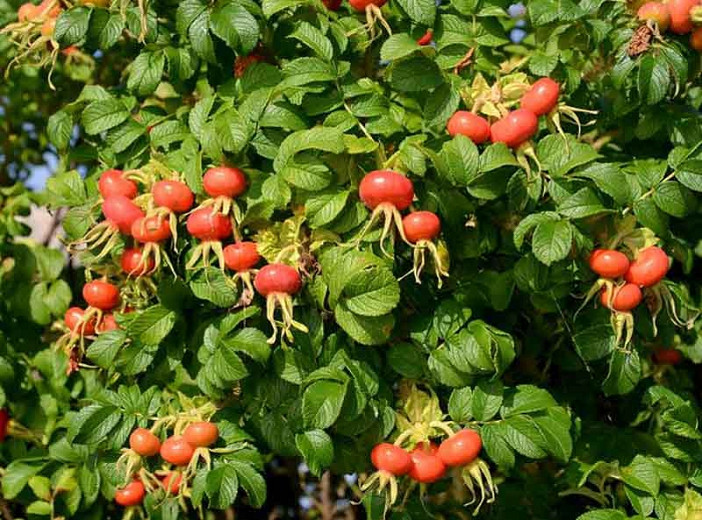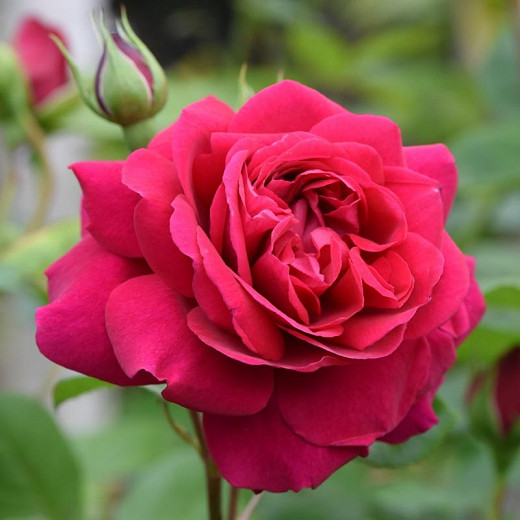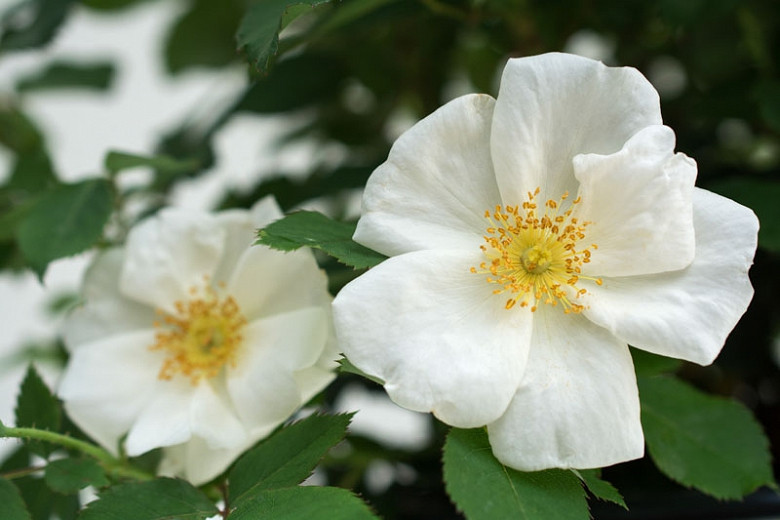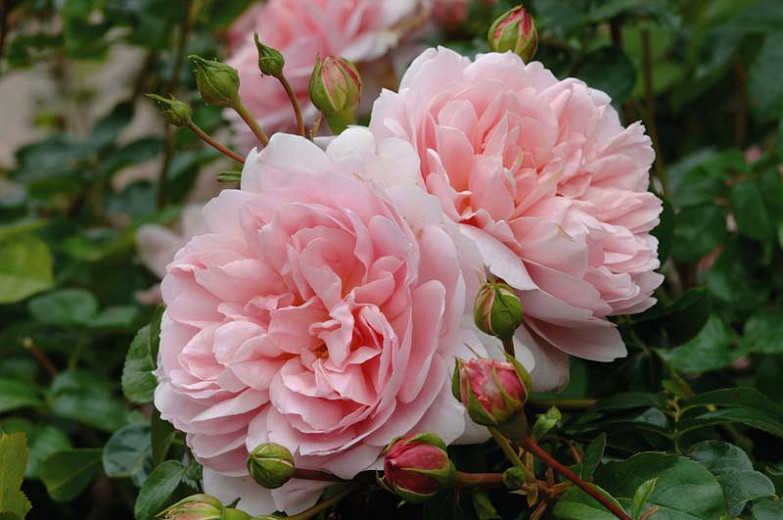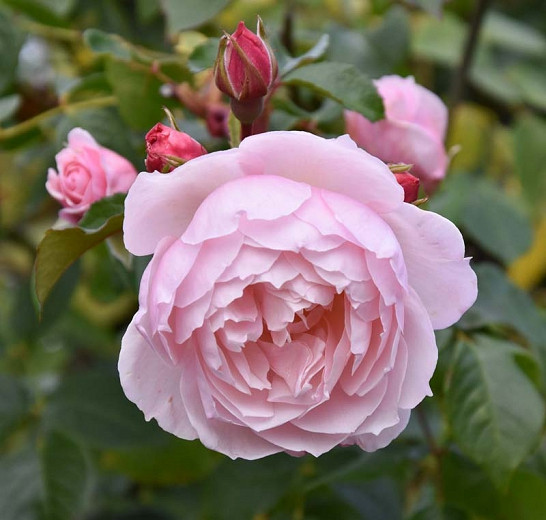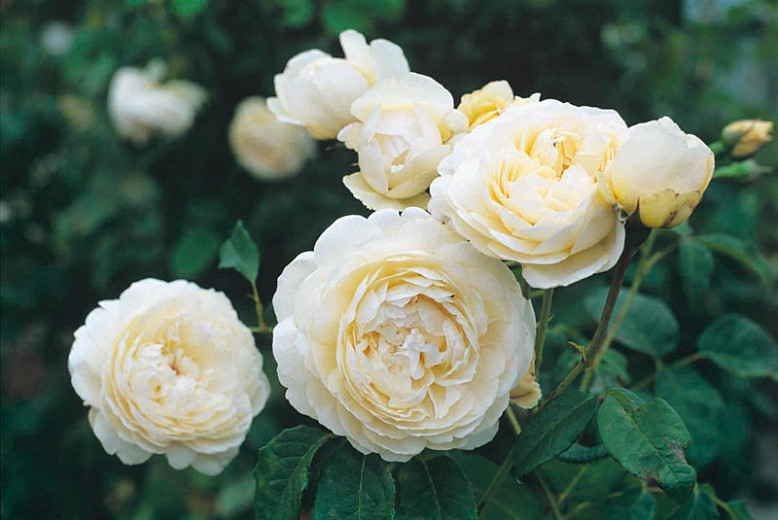Rosa rugosa Hansa (Rugosa Rose)
Incredibly hardy, Rosa rugosa 'Hansa' is a vigorous, upright, suckering shrub boasting a profusion of remarkably fragrant, double, large, 4 in. across (10 cm), rich pinkish-purple flowers (17-25 petals) from early summer up to the first frost. They are followed by edible fruits that are as pretty as the flowers themselves. Resembling cherry tomatoes, the striking scarlet rose hips, provide a beautiful contrast against the foliage of dark green leaves. The rose hips may be used to make jams and jellies. If left on the shrub, they might persist into winter to the delight of hungry birds who will feast on them during the winter months. Reliable, drought tolerant, this easy-care shrub rose is wonderful when used as a specimen, flowering hedge or in the mixed border.
- Grows up from 4-5 ft. tall (120-150 cm) and 3-4 ft. wide (90-120 cm).
- Best grown in full sun to part shade, in humus-rich, moist, well-drained soils. Tolerant of poor soils, sandy soils, clay soils, salt and drought. Note that best flowering and disease resistance generally occur in full sun. For best flowering, apply a balanced fertilizer and mulch in late winter or early spring and a balanced fertilizer again in early summer.
- Featuring a bushy, upright habit, this ravishing shrub is a superb addition to borders and creates lovely fragrant flowering hedges. Perfect as a specimen plant. Give it some space so that its canes can soar or flop as they like, and enjoy their undisciplined habit. Because of its tolerance for salt and sand, this rose can be planted along ocean shores to help stabilize beaches and control beach erosion.
- Very disease resistant, but watch for black spot, rose rust and powdery mildews. May be affected by aphids, leafhoppers, glasshouse red spider mite, scale insects, caterpillars and rose leaf-rolling sawfly
- Attractive to pollinating insects, butterflies and birds
- Do not remove spent flowers if you want to enjoy a beautiful crop of orange-red hips in fall and winter.
- Unlike most garden roses, rugosas object to heavy pruning. When you use them in landscaping, anticipate the fully-grown bush size and let them grow.
- Propagate by hardwood cuttings in autumn or by budding in the summer
- Bred by Schaum & Van Tol (Netherlands, 1905).
- Rosa rugosa species is native to Eastern Russia, Korea, Japan, Northern China.
- Find where this species is invasive in the United States.
- Discover beautiful U.S. native plant alternatives.
Requirements
| Hardiness | 3 – 8 |
|---|---|
| Heat Zones | 1 – 9 |
| Climate Zones | 1, 1A, 1B, 2, 2A, 2B, 3, 3A, 3B, 4, 5, 6, 7, 8, 9, 10, 11, 12, 13, 14, 15, 16, 17, 18, 19, 20, 21, 22, 23, 24, A1, A2, A3 |
| Plant Type | Roses, Shrubs |
| Plant Family | Rosa – Shrub Roses, Rosa – Roses |
| Exposure | Full Sun, Partial Sun |
| Season of Interest | Summer (Early,Mid,Late)FallWinter |
| Height | 4' – 5' (120cm – 150cm) |
| Spread | 3' – 4' (90cm – 120cm) |
| Spacing | 48″ (120cm) |
| Water Needs | Average |
| Maintenance | Average |
| Soil Type | Chalk, Clay, Loam, Sand |
| Soil pH | Acid, Alkaline, Neutral |
| Soil Drainage | Moist but Well-Drained, Well-Drained |
| Characteristics | Fragrant, Showy, Fruit & Berries |
| Tolerance | Clay Soil, Drought, Salt |
| Attracts | Birds, Butterflies |
| Garden Uses | Beds and Borders, Hedges and Screens |
| Garden Styles | Coastal Garden, Informal and Cottage, Traditional Garden |
